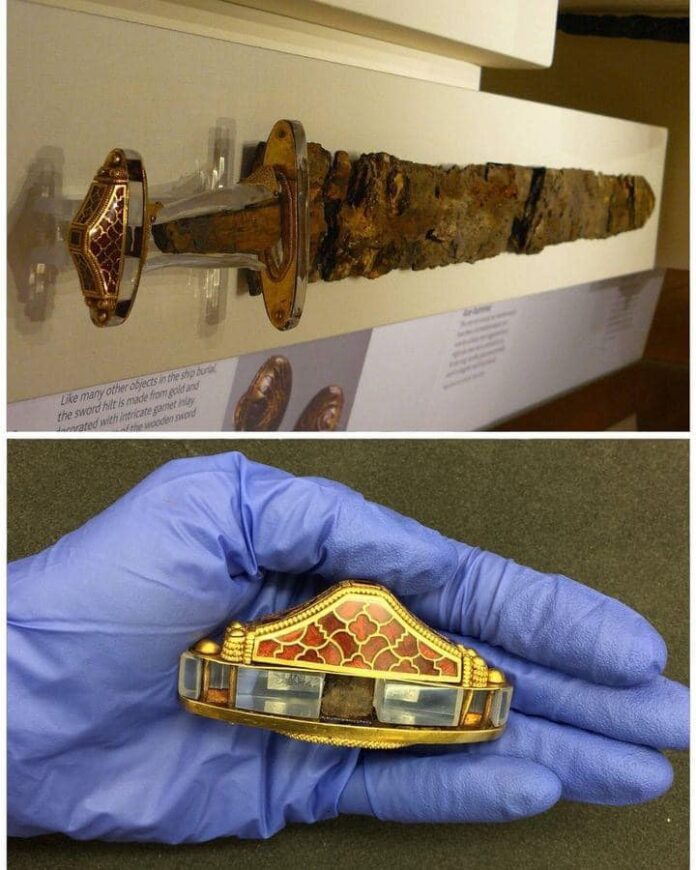Sword from the Anglo-Saxon Sutton Hoo ship-burial, dates to approximately AD 620. Suffolk, England.
This sword is one of the many artifacts discovered in the Sutton Hoo ship-burial, which is thought to have belonged to one of four East Anglian kings: Eorpwald, Raedwald and co-regents Ecric, and Sigebert. The artifacts of this burial were chosen to reflect the high rank of the king, and to equip him for the Afterlife.

In the early days of the Roman Empire, the army welcomed a new weapon into its ranks, introduced by Celtic cavalry auxiliaries. These warriors, loyal to their heritage, continued to wield their Celtic long swords even while serving Rome.
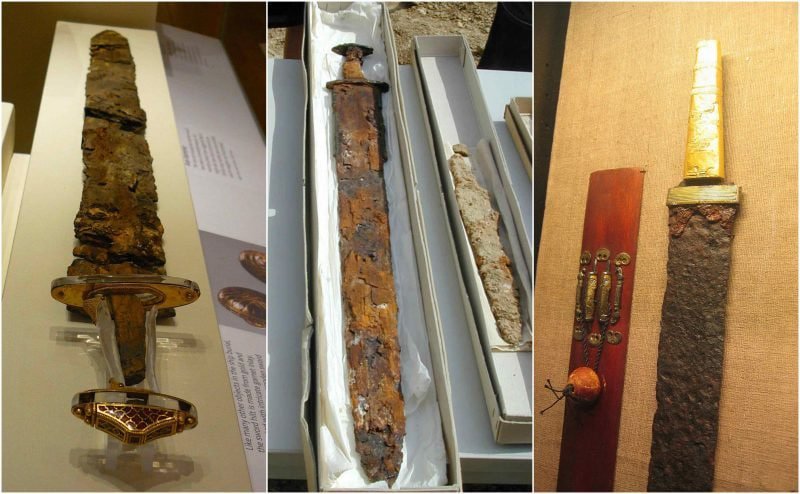
These long swords, known as the spatha, boasted blade lengths ranging from 60 to 85 cm and soon began to replace the earlier, shorter gladius swords.
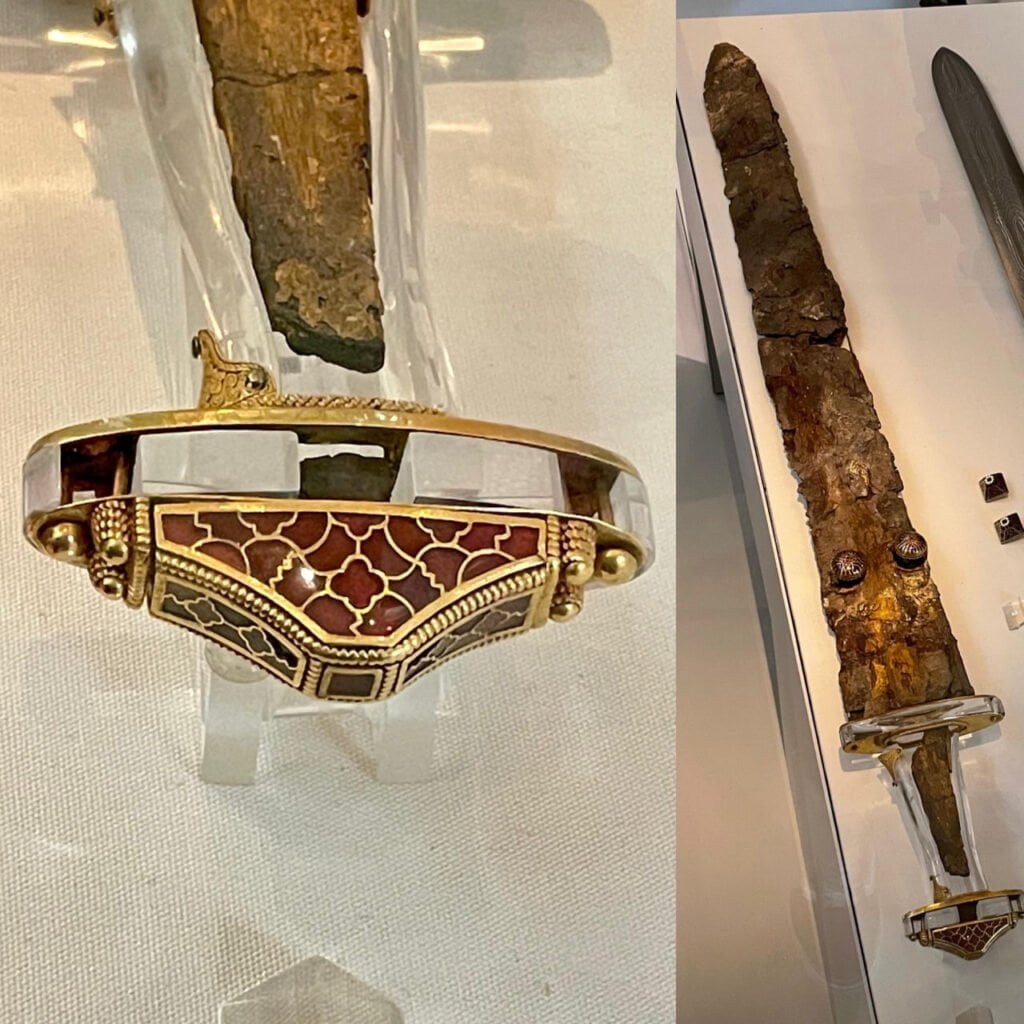
As the centuries progressed, the shift from gladius to spatha became more pronounced. By the late 2nd to the 3rd century, the Roman military had largely transitioned to using the spatha. This change was so significant that it even influenced how soldiers wore their swords.
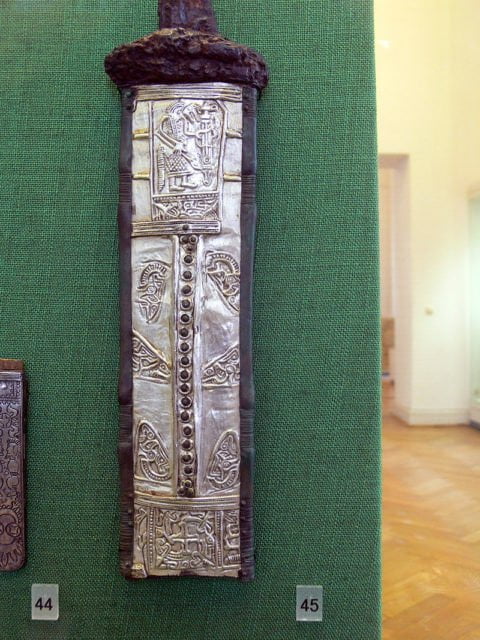
From the early 3rd century, both legionaries and cavalrymen started carrying their swords on the left side, possibly due to the abandonment of the large scutum shield and the spatha’s prominence over the gladius.

One particularly striking example of the spatha’s significance is a gold sword-pommel from the 7th-century Anglo-Saxon ship burial site at Sutton Hoo in Suffolk.

This exquisite artifact, adorned with five curved panels inlaid with garnets and secured by rivets with beaded gold wire collars, speaks volumes about the spatha’s cultural and historical importance. The site’s discovery was even immortalized in the Netflix film “The Dig.”
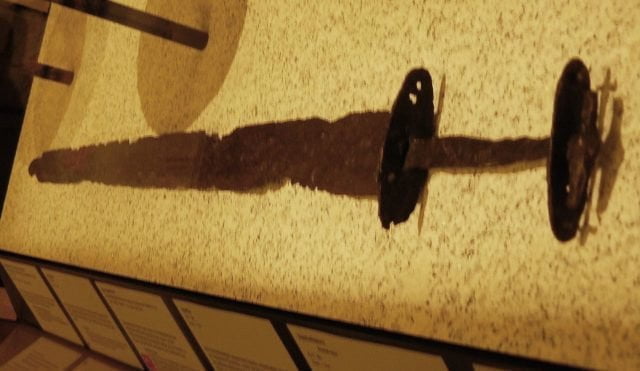
The name “spatha” itself has ancient roots, tracing back to the Greek word spáthē (σπάθη), which generally described any long, flat object. This term was adopted by the Romans during the imperial period and evolved to refer specifically to this type of sword. Initially, “spatha” appeared in Roman literature with varied meanings.

Pliny and Seneca used it to describe a spatula, a metal-working tool, a palm leaf, among other things. It wasn’t until the historian Tacitus mentioned it in the context of a sword that its association with the weapon became clear.
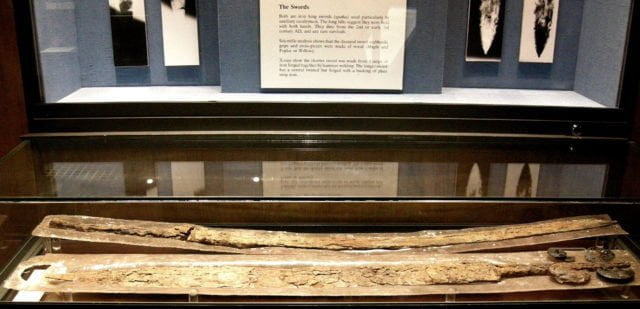
Tacitus recounts the tale of the British king Caractacus, who rebelled against Rome and found himself trapped on a rocky hill. If he turned one way, he faced the gladii of the legionaries; if he turned the other, the spathae of the auxiliaries. Tacitus didn’t specify the origins of these auxiliaries, leaving it a mystery whether they were transplanted soldiers or local levies. However, most spathae discovered by archaeologists have been found in Germany and Eastern Europe, suggesting that their owners were likely Germanic.
Interestingly, the spatha seemed to vanish from records for about two centuries before reappearing as the standard weapon of heavy infantry. The Romans might have adopted this weapon from their Germanic mercenaries, although the name “spatha” does not suggest a Germanic origin. Despite numerous Germanic sword names like the Old English “sweord” and “bill,” none can be conclusively tied to the spatha, which never featured as a sword name in Germanic languages.
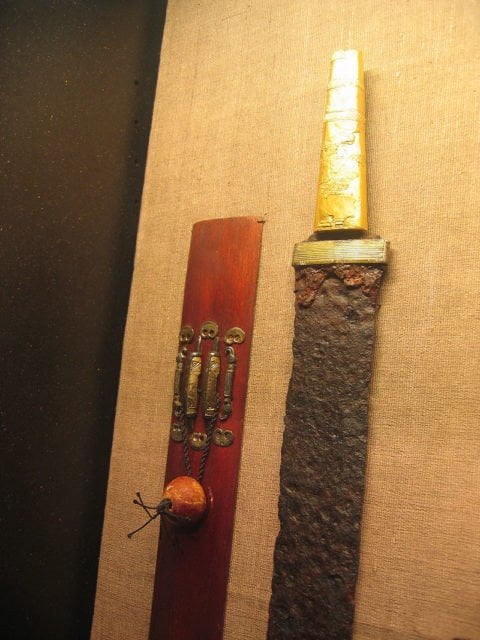
The spatha’s legacy extended beyond Rome, remaining in use in the Byzantine Empire and its army. Within the Byzantine court, the title “spatharios” (σπαθάριος), meaning “bearer of the spatha,” became a mid-level court rank. Several variations of this title emerged, including “protospatharios,” “spatharokandidatos,” and “spatharokoubikoularios,” the latter specifically reserved for eunuchs. One of the most notable figures to hold the title of “spatharokandidatos” was Harald Hardrada, a legendary warrior and king.
Thus, the spatha’s journey from a Celtic long sword to a symbol of Roman and Byzantine martial prowess encapsulates a fascinating chapter in the history of ancient weaponry. It stands as a testament to the cultural exchanges and evolutions that shaped the ancient world, leaving behind a legacy that continues to captivate historians and enthusiasts alike.



